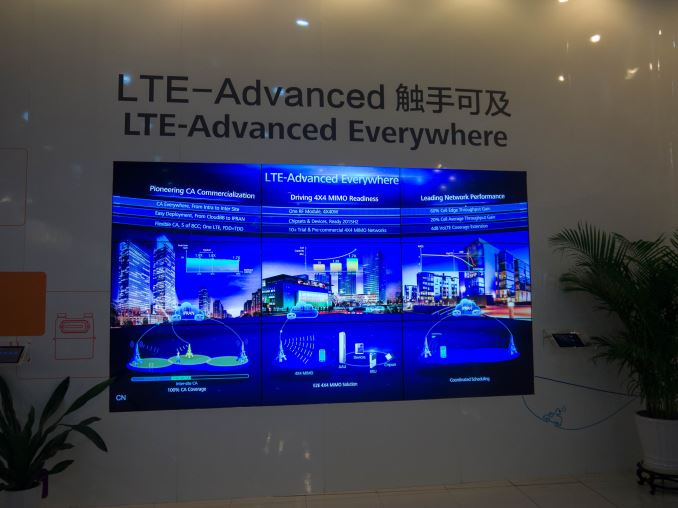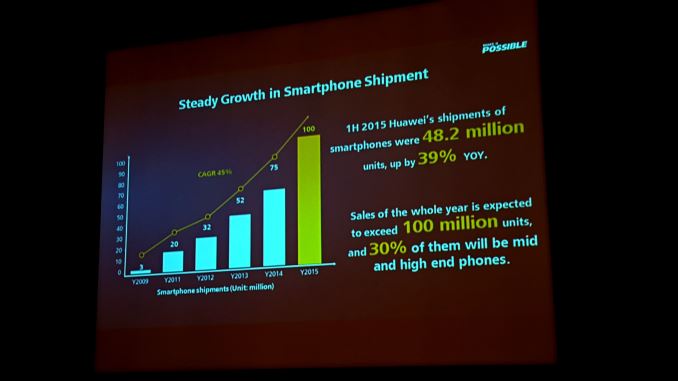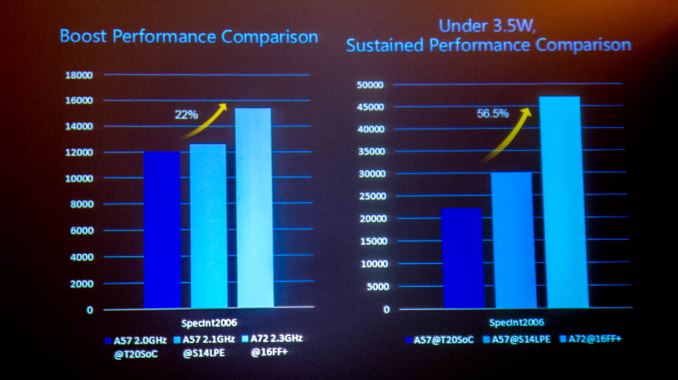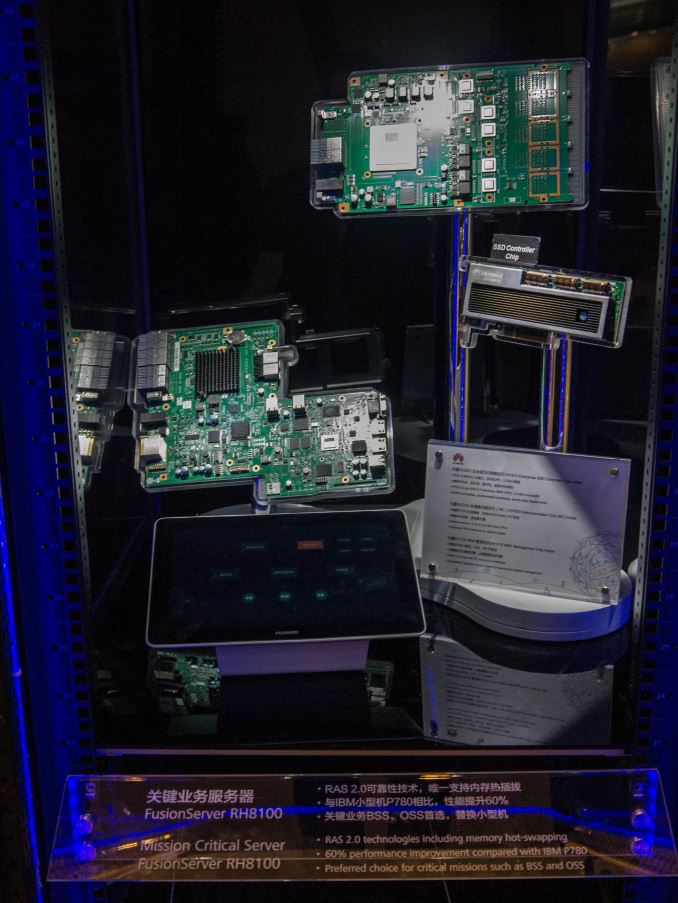China Calling: Huawei’s Media Tour, Kirin 950 and Why We Went
by Ian Cutress on December 4, 2015 8:00 AM ESTFinal Thoughts
All truth be told, when an electronics manufacturer opens up we stand to gain a great deal of insight into how they think and how strategies formulate. Sure, it’s a question of speaking directly to the people that actually make the decisions, otherwise questions and answers never go through the chain. But also as an editor, from my perspective, it is important to understand when you are presented with a standard PR answer and ask the right questions sufficiently in order to get to the heart of what makes a company tick. There will always be things that a company will never tell you, either due to liability or the level of trust they have with you, or there might be some discussions that remain strictly behind closed doors.
As we tell every company we meet, those closed room discussions, despite not directly producing content for us as technical media or analysts, are just as valuable as on-record meetings and can actually be really helpful in understanding perspective or technical details. Even if we do not write about what is said, it enables another layer of conscious or sub-conscious consideration and analysis about the industry for when we write about other topics, helping us translate what we see into the wider picture. Understanding why from a bottom-up perspective is just as important as the top-down, even more-so when looking at trends and directions and being able to educate users and engineers alike.
In that regard, this trip has established a new level of dialogue between Huawei and AnandTech in order for both sides to understand each other more, from our understanding of the markets and devices to their diverse silicon and product portfolio. That rapport and direct line of communication to those who turn the cogs which we did not have before is important, with respect to handsets, silicon, and wider corporate strategy. It is clear that Huawei wants to expand into more markets beyond their standard Chinese base, and has dipped its toe into leading the market with TSMC’s 16nm FinFET+ node in the Kirin 950. The phrase ‘premium brand’ was a common theme throughout our trip, and the numbers back that up. Moving from 3 million handsets in 2009 to 48.6 million in the first six months of 2015 alone means that the investors are all happy, especially given that 30% of those are high-to-mid level devices at a cost of €400 and up. Being partially vertically integrated through its HiSilicon subsidiary allows it to reduce cost, spend on R&D and provide a custom product as long as it is well executed. While this is going on, Huawei’s two other business groups on services and infrastructure account for the other 60% of the company, which are also both benefiting from the HiSilicon synergy.
Huawei does still have several mountains to climb however, this much is obvious. When speaking purely about the handset business, when striving for that premium brand status, its presence in North America is still a way behind the two major players. This stems from several factors including a CDMA licensing and certification issue preventing Kirin chipsets in North American models, but also an issue regarding the perception of some users that will not want to hand over money for a device made by a Chinese-based data company, especially if they cannot pronounce the name. Arguably the first of those issues is easier to crack about CDMA, such that one solution to Kirin might be to produce a die without an integrated modem, similar to Apple, but both of the issues above will have severe implications on Huawei’s ability to expand in the US. The Huawei watch too, as a dip into the wearable space, comes with many variables on style, size, applicability, usefulness, ecosystem, and others – sometimes a single model can be deceptive when users have more unique tastes and perhaps want something more/less than a classic watch design.
For the rest of the world where CDMA isn’t a factor, the latest Kirin 950 chipset needs to be a proven entity and tackle the big players in Apple’s A9, Qualcomm’s upcoming Snapdragon 820, Samsung’s Exynos 8890 as well as other upcoming custom designs. Samsung is the only member in that list with their own fabs, meaning the others will have to pay top dollar for a lead in semiconductor manufacturing. Beyond that the quality of the designs for performance, power efficiency, custom IP blocks and software integration will also be up against back-end production of the silicon itself. It comes across as a fairly daunting task for one of these manufacturers to get all the pieces in place for a new flagship handset every year that builds on the last. In order to be successful they have to execute well in every area every year, to which we’ve already seen some failures and successes.
Both Andrei and I were quietly surprised with the Kirin 950 announcement, and felt positive for the 950 as it offers some interesting innovations (first smartphone A72 cores, first hybrid memory controller, new custom image signal processor, low power i5 sensor hub with compute capabilities in an ARM Cortex M7). It will be interesting to see how much we can decipher about the new chip compared to the old, especially when we have new cores (A53/A57 to A72), a new process node (28nm to 16FF+) , new custom IP and so on. When we get a device into test, teardown and produce numbers, they will tell the story. But as is obvious from our trip that smartphones are just the tip of the iceberg for Huawei.














109 Comments
View All Comments
lilmoe - Friday, December 4, 2015 - link
"eager to ripoff their customers and sell them overpriced garbage if they get the chance"History has proven that that's exactly what people want (consumers, power users and reviewers alike)... I don't accept it, but I'm living with it. You should too.
People just want a working, OK product with "amazing presentation", and they're willing to pay a big buck for that.
s.yu - Saturday, December 5, 2015 - link
Yeah, Huawei is despicable in selling cheap tech wrapped in flashy shells as "high end", but look at all those fools who bought them.londedoganet - Friday, December 4, 2015 - link
> In the end Huawei is not really Chinese, they behave just as bad as Western companies, eager to ripoff their customers and sell them overpriced garbage if they get the chance.I fail to see the link between being Western and ripping customers off. Dishonesty in dealing is not an exclusively Western trait, neither is being honest and fair-dealing an exclusively Chinese trait.
Cinnabuns - Friday, December 4, 2015 - link
As a Chinese person who grew up in Hong Kong, I have no idea what jjj is talking about.As a person who reads story after story about Chinese knockoff devices of questionable quality being sold to consumers, I still have no idea what jjj is talking about.
dawei86 - Sunday, January 10, 2016 - link
is that you are fucking retard???Ryan Smith - Monday, December 7, 2015 - link
In the interest of transparency, let it be known that I have removed 6 comments from this discussion thread. Racism will NOT be tolerated, end of story. This is a technology news website, and while I like to give you guys a wide berth, there are some matters that we simply will not humor and are not appropriate for this website.Goyim - Monday, December 7, 2015 - link
In the End iPhone is not American, for it is Made in China.V900 - Friday, December 4, 2015 - link
"Eager to ripoff their customers and sell them overpriced garbage "What a load of pearl-clutching, pseudo intellectual prattle
tipoo - Friday, December 4, 2015 - link
So other Chinese companies are eager to squander all profit margins in reverence of the consumer?s.yu - Saturday, December 5, 2015 - link
They're not in a position not to. Huawei, however, is soon leaving that position, as you can see from the pricing of its P7, P8, Mate 7 and Mate S devices.They'd gone the furthest with Mate S, using the worst possible technology in a flagship and charging outrageous prices. P8 and Mate 7 already had ancient technology at normal to high prices, but Mate S was the worst offender.
They probably didn't sell much though, as they quickly reverted with the pricing of the Mate 8. With much improved internals, it's cheaper than Mate S still(they made an excuse that Mate S is the real flagship while Mate 8 is a semi-flagship, semi-flagship with better internals than the actual flagship, LMAO) and close to what a Chinese manufacturer would usually charge.
Xi JinPing's propaganda is basically turning the less educated 90% of the Chinese population into Nazis. All media are tightly controlled and this is some of what they're spreading: 1. The oppressors are at the gates and we rightfully expand our military presence. 2. We Chinese are the righteous(controversial territorial claims, repeating colonial age history over and over etc.) 3.We Chinese are the best(playing with numbers, telling little stories etc.), and western economies are collapsing. Imported merchandise are overpriced rip-offs, buy our own which are at least as good(claims "proven" through ridiculous "experiments" that only serve to feed the nationalists what they want to see). See something familiar here? Remember what Hitler was feeding to the Germans before he waged war on the world?
This is what Huawei is using, because, as I said before, the name itself can be loosely translated into "China is capable", it's also usually how the fanboys interpret the name, so the nationalistic ultra-lefts with brittle self-esteem would have an orgasm to see it sell. When they brainwash enough ultra-lefts to follow them to the death, see to it that they start cashing in on that.